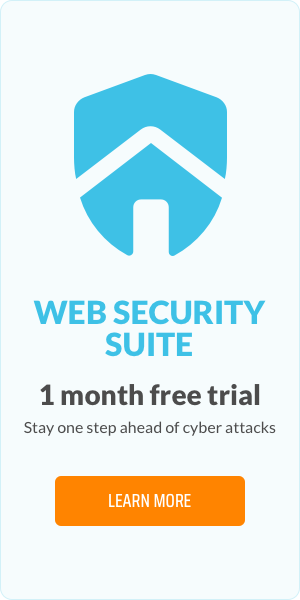How to Make Your Web Page Secure: Top Strategies for 2025

Nothing kills your website’s vibe faster than the dreaded “Not Secure” warning popping up in the browser bar. In 2025, users expect airtight security when they visit any web page, and if your site isn’t up to snuff, you’re not just risking data breaches—you’re losing trust. The good news? Securing your web page isn’t rocket science. With the right strategies in place, you can protect your site from hackers, data leaks, and all the digital nasties lurking on the web.
Understanding Web Page Security
Before we dive into the nitty-gritty, let’s talk about why web page security matters. It’s not just about locking down your login page or installing an SSL certificate—it's about protecting your users, your data, and your brand.
Cyber threats are getting more sophisticated, and even small websites can be prime targets. Phishing attacks, malware injections, data breaches—they’re not just for the big guys. Whether you run a simple blog or an e-commerce giant, web security is non-negotiable.
What is a Web Application Firewall (WAF)?
Think of a Web Application Firewall (WAF) as your site’s personal bouncer. It sits between your server and incoming traffic, filtering out malicious requests and letting the good stuff through.
A WAF can protect your site from common threats like SQL injections, cross-site scripting (XSS), and even some DDoS attacks. It acts as a shield, stopping bad actors before they can exploit vulnerabilities in your site’s code.
Pro Tip: Services like Cloudflare and AWS offer robust WAF solutions that integrate seamlessly with most hosting providers.
The Importance of Two-Factor Authentication (2FA)
You know how annoying it is to log into an account and have to enter a code sent to your phone? That’s two-factor authentication (2FA) in action—and it’s one of the simplest ways to protect your web page.
2FA adds an extra layer of security beyond just a password. Even if someone manages to snag your login credentials, they won’t get far without that second verification step. Implementing 2FA for your admin panel, user accounts, and even your CMS (like WordPress or Joomla) is a no-brainer.
Best Practice: Opt for app-based 2FA (like Google Authenticator or Authy) over SMS codes, which can be intercepted.
Overview of HTTPS vs HTTP
If your website is still running on HTTP in 2025, we need to talk.
HTTP (HyperText Transfer Protocol) is the OG method for transmitting data online, but it’s outdated and insecure. Anyone with the right tools can intercept data sent over HTTP.
HTTPS (HyperText Transfer Protocol Secure), on the other hand, encrypts that data, making it nearly impossible for hackers to read or tamper with. Browsers even flag HTTP sites as “Not Secure,” which is an instant red flag for visitors.
How to Switch to HTTPS:
- Get an SSL/TLS Certificate: Many hosting providers offer free SSL certificates through Let’s Encrypt.
- Install and Configure: Your host should have documentation on how to install it, or you can use plugins (like Really Simple SSL for WordPress) to simplify the process.
- Update Internal Links: Make sure all your internal links point to HTTPS versions to avoid mixed content warnings.
Key Strategies for Securing Your Web Page
Implementing SSL Certificate Installation
An SSL certificate isn’t optional—it’s essential. It encrypts data between your website and your users, protecting sensitive information like login credentials, credit card details, and personal data.
Pro Tip: Regularly renew your SSL certificate and set up auto-renewal to avoid unexpected expirations.
Developing a Content Security Policy (CSP)
A Content Security Policy (CSP) is like a set of ground rules for your website. It tells browsers what content is safe to load and what to block, protecting your site from malicious scripts and reducing the risk of cross-site scripting (XSS) attacks.
Key Directives in a CSP:
- default-src: Specifies the default sources for content.
- script-src: Controls which scripts can run.
- img-src: Defines where images can be loaded from.
- style-src: Determines approved stylesheets.
Example CSP Header:
Content-Security-Policy: default-src 'self'; script-src 'self' https://trustedsource.com; object-src 'none';Best Practices for Web Security
- Regular Software Updates: Always update your CMS, plugins, themes, and any other software. Hackers often exploit outdated software.
- Strong Password Policies: Use complex passwords and encourage users to do the same. Consider password managers like LastPass or 1Password.
- Limit Login Attempts: Brute-force attacks are common. Limiting login attempts and using CAPTCHAs can reduce risks.
- Use Secure Hosting: Not all hosting providers are created equal. Choose a host with strong security practices and 24/7 monitoring.
- Regular Backups:In case of an attack, having recent backups can save your site. Use automated backup solutions and store backups offsite.

Data Breach Prevention Techniques
Regular Security Audits
Performing regular security audits is like a health check-up for your website. It helps you identify vulnerabilities before hackers can exploit them.
What to Include in a Security Audit:
- Scan for malware and vulnerabilities.
- Review user access controls.
- Check for outdated software or plugins.
- Test for common vulnerabilities like XSS and SQL injections.
Safe Data Handling Practices
Data privacy laws (like GDPR and CCPA) are becoming stricter. Ensuring you handle user data safely isn’t just a best practice—it’s a legal requirement.
Safe Data Handling Tips:
- Encrypt sensitive data at rest and in transit.
- Use secure APIs and avoid exposing sensitive endpoints.
- Regularly purge unnecessary user data.
Conclusion
Securing your web page doesn’t have to be overwhelming. By implementing the strategies outlined above—from installing SSL certificates and enabling two-factor authentication to setting up a Content Security Policy—you can significantly reduce the risk of cyberattacks.
In 2025, web users are more security-conscious than ever. Give them the confidence they need by keeping your site safe, secure, and up to date. Stay proactive, take a look at our current web security suite plans, and keep your website secure.
TLD Price Changes Coming April 2025
Related articles:
